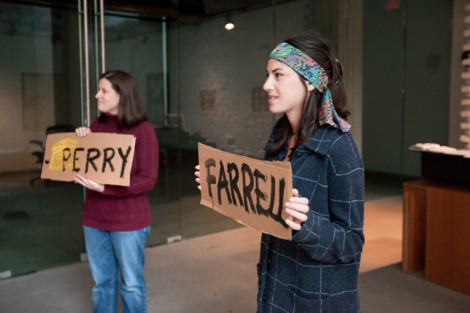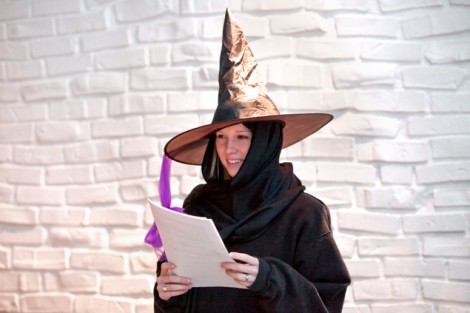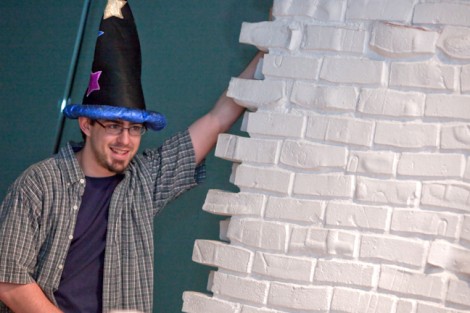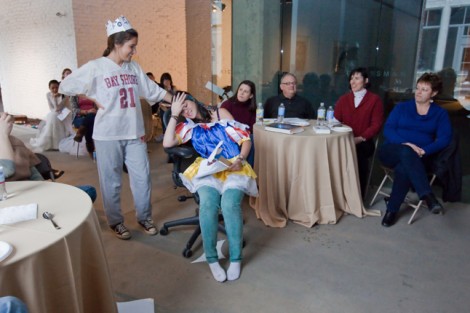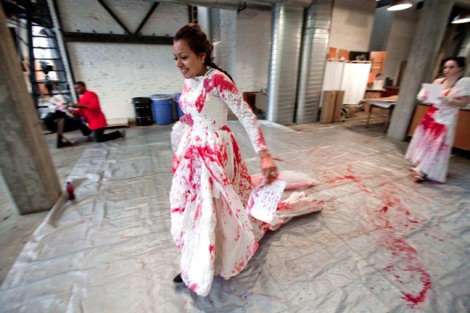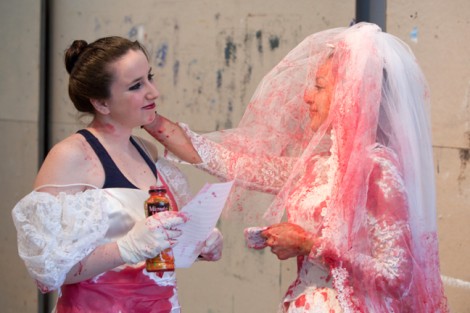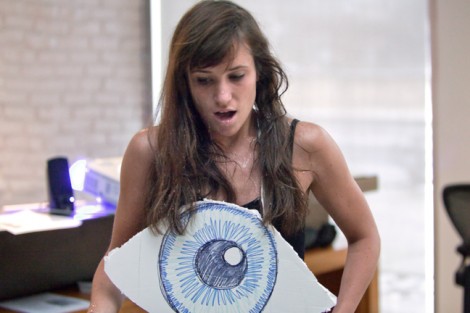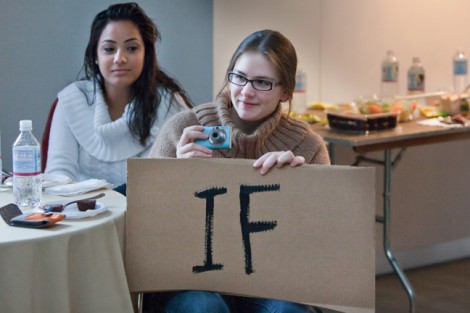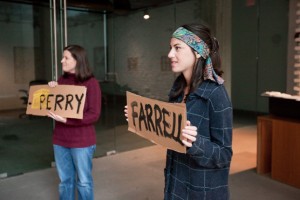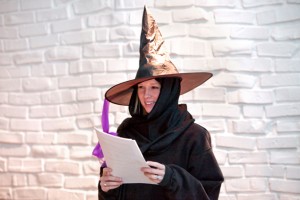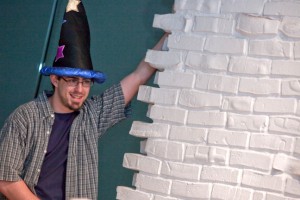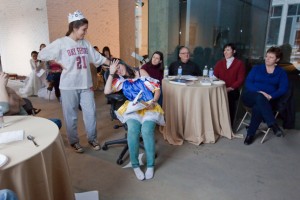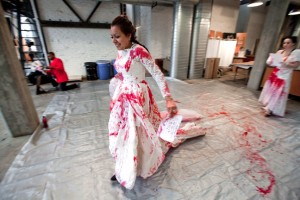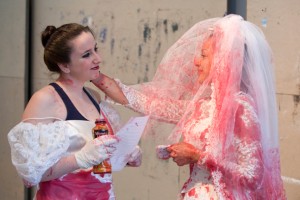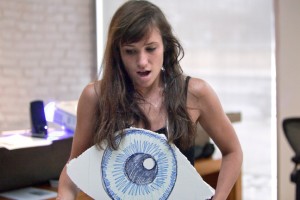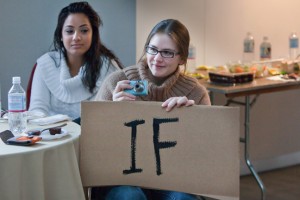The interdisciplinary class that students are taking this semester with Ed Kerns, Clapp Professor of Art, and Suzanne Westfall, professor of English, is completely absurd.
At least, the subject matter is absurd. Kerns and Westfall are team teaching a course called Dada: Visual and Performing Art. Dada was the absurdist, anti-war, anti-art movement in the early 1900’s.
“Together we can ask synthetic questions that we cannot ask from a strictly disciplinary point of view,” Kerns says.
Students in the course have learned about the history of the arts in the early 20th century, read the manifestos and art histories, read plays, visited the Philadelphia Museum of Art’s Dada installations, and attended performances of Dada plays.
This course led up to the College Theater production of Ubu Roi, largely seen as the first absurdist play, April 14-17. Westfall directed the production and the class made the set and served as stage crew. Students in the class also created collage posters for the production.
Midway through the semester, students were divided into three groups and asked to create original performances, incorporating the themes and styles of the Dada artists of the early 20th century with their own more modern concerns. They wrote, costumed, rehearsed, conceptualized, created and performed these 10 minute scenes for an audience.
The students put together the content in secret, with the intention of having the performances be shocking to the audience. Images from the performances included dumping red paint on a girl in a wedding dress, reading poetry in absurd outfits, and throwing ice water on an unsuspecting audience member.
“As a second semester senior, I wanted to challenge myself as an artist and break creative boundaries,” says Kassidy Keller ’11 (Maple Plan, Minn.), an English and art double major. “I enjoy the conglomeration of performance and visual art. I also enjoy learning about the history of Dada such as information about the revolutionary artists such as Marcel Duchamp.”
Art major Imogen Cain ’12 (Perkasie, Pa.) has found the absurdism of Dada to be very interesting.
“Our projects have really been open for us to go wild and I’ve enjoyed having that freedom. We do a lot of group or partner work as well, which has been fun,” Cain says.
Initially, Westfall sought Kerns’s expertise on the art of the Dada period, and then they began talking about offering a Dada course that would combine visual art and performance.
Westfall says the interdisciplinary approach to teaching this material has been beneficial.
“It’s unbelievably rewarding to work in this way—not only for us to brainstorm with each other, but also to combine our expertise and our ideas about such an interesting period…for a class of art and theater students. The projects we’ve worked on this semester not only teach students about a time when various kinds of art intersected, but also get them working outside their comfort zones,” she says.
The interdisciplinary nature of the course appealed to Kelly Rodriguez ’11 (Huntington, N.Y.), an English major.
“In previous courses I was exposed to avant-garde theater and wanted a chance to learn more about this style in depth. I also wanted the opportunity to explore intersections and parallels between theater and visual art,” Rodriguez says.
Westfall hopes students take away a good understanding of how Dada led to other forms of expression.
“It’s great for students to learn that artists felt so passionately about important issues that they used their art for political expression, while at the same time exploding European art into new forms like cubism, surrealism, expressionism. This period gave birth to the style that would become MTV, rock concerts, and performance art. It’s important that our students learn the history of these forms, understand that arts are collaborative, and that art has social purpose. It’s also great for them to create their own art, to work with other artists in other disciplines to create works in which the whole is more than the sum of the parts.”
